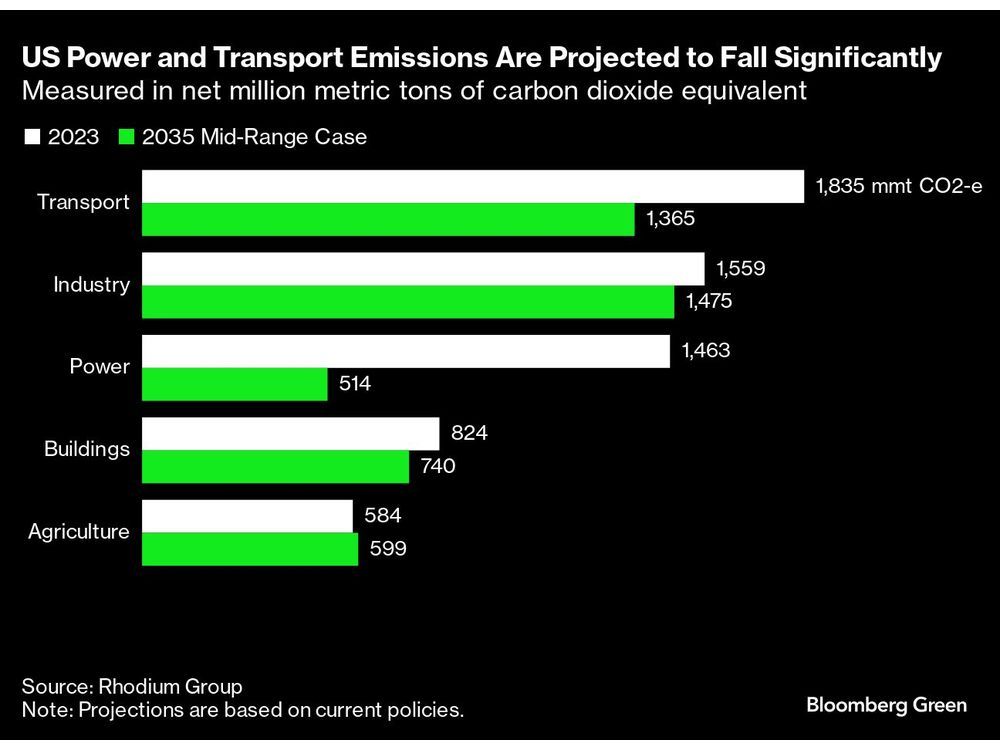
Article content
(Bloomberg) — US greenhouse gas emissions are not falling fast enough to meet the Biden administration’s goal of cutting greenhouse gas pollution by at least half in 2030, compared with 2005 levels, according to new analysis by research firm Rhodium Group.
The group said the Inflation Reduction Act, passed in 2022, has helped create a pathway for deep decarbonization across the energy and transportation sectors – but the US is still only on track to achieve as much as a 43% emissions reduction at the start of the next decade.
Article content
The report highlights skyrocketing electricity demand from artificial intelligence and other data center uses as one of the key obstacles.
“This extra demand means emissions could have been lower by 2025,” said Ben King, one of the lead authors of the report, in an interview.
Rhodium’s outlook for US emissions comes just over a week after new figures indicated that China, the world’s biggest polluter, may have peaked its output of greenhouse gases last year.
A rapid pace of emissions reductions in China and the US, the second biggest emitter, would play a critical role in meeting the Paris Agreement’s goal of limiting planetary warming to below 2C above the pre-industrial average, and ideally to 1.5C.
As part of the US’s commitment to the agreement, the Biden administration pledged the country will achieve net zero emissions no later than 2050.
The US’s current trajectory to 2030 and beyond suggests the country is off track for this mid-century goal, according to the report.
“The US knew it was setting an ambitious target with that agreement,” King said, noting there has at least been progress in emissions reductions. For example, US emissions fell 1.9% year-over-year in 2023 even as the economy expanded. To give that more perspective, US emissions last year were 18% lower than they were in 2005.
Article content
The passage of the IRA has also made further cuts look more likely as it supports the expansion of wind, solar and electric vehicles.
Rhodium projects zero-emitting sources like wind, solar and nuclear could account for 62-88% of total electricity generation in 2035, due to support from IRA subsidies and new Environmental Protection Agency limits for power plant emissions.
It forecasts that power sector emissions reductions over 2023 to 2035 could range from 42% to 83% depending on how quickly cleaner power generators can be built to match growing electricity demand from EVs and data centers.
Transportation sector emissions could decrease by 22-34% over the same period, aided by stringent EPA standards for vehicles. Rhodium sees EVs representing as much as 74% of light-duty vehicle sales by 2032.
Still, Rhodium notes its projections are based on current federal and state policies — and a lot could change depending on the results of elections in November. The report said a win for former President Donald Trump might lead to policy rollbacks.
King warned cuts to policies could reverse recent gains, complicating the decarbonization path.
Share this article in your social network